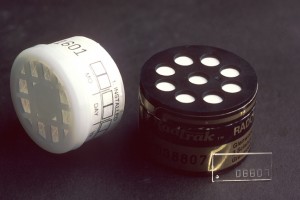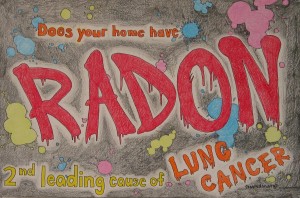Welcome folks to National Radon Action Week, which will be taking place from October 20th to October 26th! If you’re wondering what that means exactly or just what radon is, keep on reading! If you already know what it’s about you can skip on down a little further to see some recommended ways to spend the week.
What You Need to Know About National Radon Action Week
What is Radon?
Radon is an odorless, tasteless and colorless gas – so it’s virtually indetectable – that occurs naturally. The United States Environmental Protection Agency has classified radon as a Class A carcinogen, which means that it is extremely harmful to humans and causes cancer. In fact, radon is responsible for more than 20,000 lung cancer deaths each year in the U.S. alone.
Since it’s a radioactive decay product of elements such as Uranium, and those elements commonly exist in soil and rock under the ground it’s possible for radon to be a problem anywhere, regardless of geographical location. There’s a common misconception that it’s only a problem in older structures and homes, but this isn’t true. While modern homes are generally built with radon resistant construction, there are ways radon can still seep in.
In short, that means the only way to discover whether or not radon is – or isn’t – a problem in your home is to specifically test for it. The good news is that you can purchase DIY testing kits for around $15-$30 at any local hardware store or online. Of course, you can also hire an experienced radon professional to test your home, as well.
What is National Radon Action Week, and Why Does It Exist?
 Despite the fact that radon is the second leading cause of lung cancer in the U.S. behind smoking, and the first in non-smokers, many people have no clue it’s even a problem. There are many stories of people being diagnosed with lung cancer, and finding out about radon after they’ve discovered a problem. Needless to say, this is horrible because lung cancer has one of the highest mortality rates out of any type of cancer. Patients don’t usually show symptoms until after the disease has progressed beyond a curable state, which means it’s very difficult to detect. In addition, radon increases the risk of lung cancer over an extended period of time, so long-term exposure is the biggest culprit. There are no short-term symptoms of radon poisoning.
Despite the fact that radon is the second leading cause of lung cancer in the U.S. behind smoking, and the first in non-smokers, many people have no clue it’s even a problem. There are many stories of people being diagnosed with lung cancer, and finding out about radon after they’ve discovered a problem. Needless to say, this is horrible because lung cancer has one of the highest mortality rates out of any type of cancer. Patients don’t usually show symptoms until after the disease has progressed beyond a curable state, which means it’s very difficult to detect. In addition, radon increases the risk of lung cancer over an extended period of time, so long-term exposure is the biggest culprit. There are no short-term symptoms of radon poisoning.
This means two things: people generally only discover it’s a problem if they test their home, or if they are having health issues. If the latter detection method is used, it can be more than a little hazardous to one’s health.
With all this in mind, that’s why National Radon Action Week exists. Agencies such as the Department of Health, U.S. EPA and more are trying to build awareness about radon. Not only that, they’re trying to encourage homeowners, business owners and property managers of any kind to have their residence or building tested for radon. As you can see it’s not just about awareness, it’s about taking action to combat the issue.
National Radon Action Week Checklist
To help everyone prepare for the week, we’ve compiled a checklist of things you should try to do:
- Test your home, residence or building for radon. If you cannot test your home because you’re renting then encourage your landlord to do so. It’s inexpensive, and radon testing kits are always available.
If elevated levels are discovered:
- If elevated levels are discovered during your first short-term test (see: radon testing) perform another long-term test, obviously this will take longer than a week
- Contact a local radon professional or mitigation contractor to find out how to proceed with the installation of a mitigation system
Otherwise, do the following:
- Share this website, the U.S. EPA’s radon resources page, or any info related to radon to a friend, family member or colleague to help spread awareness
- Research the prevalance of radon in your area, and identify any other locations that need to be tested, such as your child’s school or daycare
- Send an email to local legislature requesting more attention be placed on radon and its associated dangers
- Test your water supply – if it’s well water – or your granite countertops for the presence of radon. Both of these should be extremely minimal in terms of radon exposure, but it’s still worth testing to be sure.
Everyone’s main goal during National Radon Action Week should be to take action, which means test your home for the presence of radon. It needs to be done.



